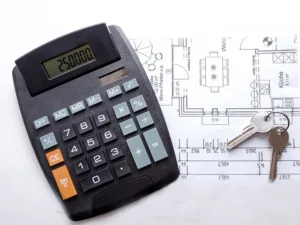In this blog post, we answer frequently asked questions about everything related to construction subcontracting. If you are new to the industry, dive in and learn the basics.
Table of Contents
What is subcontracting in construction?
Subcontracting in construction is a common and essential practice where the general contractor hires additional firms or individuals, called subcontractors, to complete specific parts of a construction project. This approach allows the general contractor to manage the project more efficiently by delegating specialized tasks to experts in those areas. Here are some key aspects of subcontracting in the construction industry:
- Specialization: Subcontractors are typically specialized in particular areas of construction, such as electrical work, plumbing, HVAC (heating, ventilation, and air conditioning), roofing, or masonry. This specialization ensures that each component of the construction project is handled by experts, enhancing the quality and efficiency of the build.
- Management and Coordination: The general contractor is responsible for the overall management of the project, including the coordination of all subcontractors. This involves scheduling, ensuring quality control, and that all parts of the project are completed in a timely and compliant manner.
- Legal and Contractual Obligations: Contracts between the general contractor and subcontractors specify the scope of work, timelines, payment terms, and other obligations. These contracts are crucial for defining responsibilities and liabilities, as well as for protecting the rights of all parties involved.
- Cost Efficiency: By using subcontractors, the general contractor can potentially reduce project costs. Subcontractors often have their own materials, tools, and labor, which can be more cost-effective than if the general contractor had to provide all resources.
- Risk Management: Subcontracting helps distribute the risks associated with various aspects of the construction. Each subcontractor assumes responsibility and liability for their part of the project, which can mitigate overall risks for the general contractor.
- Licensing and Compliance: Subcontractors must typically be licensed for their trade, ensuring they meet local and national standards for their work. This helps ensure compliance with safety and building codes, which is crucial for the legality and safety of the building project.
In summary, subcontracting in construction allows general contractors to leverage specialized skills and distribute various project tasks, enabling more effective project management, risk distribution, and often leading to better project outcomes.
What is a subcontract in construction?
A subcontract in construction is a formal agreement between the general contractor and the subcontractor to perform a specific part of the overall construction project. The subcontract outlines the tasks, responsibilities, and expectations for the subcontractor, detailing how they fit into the larger project managed by the general contractor. Here are the critical elements and functions of a construction subcontract:
- Scope of Work: This section of the subcontract clearly defines the particular tasks that the subcontractor is responsible to complete. It might include specifics like materials to be used, detailed plans and specifications, and any other requirements that outline what needs to be done.
- Financial Terms: The subcontract specifies how much the subcontractor will be paid for their work. Payment terms may be structured as fixed sums, payment upon completion of certain milestones, or based on time and materials used. It also includes conditions for billing and any penalties for late completion.
- Duration and Schedule: The subcontract sets forth timelines for the subcontracted work, including start dates, milestone deadlines, and completion dates. It ensures that the subcontractor’s work aligns with the overall project timeline managed by the general contractor.
- Quality and Standards: The agreement details the quality standards and materials specifications that the subcontractor must meet. It may also outline inspection and testing procedures to ensure compliance with these standards.
- Legal Compliance: The subcontract requires the subcontractor to adhere to all applicable laws, regulations, and building codes. It covers permits, safety standards, and environmental regulations.
- Insurance and Liability: The subcontract addresses insurance requirements that the subcontractor must maintain, such as liability insurance, worker’s compensation, and property damage insurance. This section also delineates the risks and liabilities each party assumes.
- Dispute Resolution: Mechanisms for resolving any disputes between the general contractor and the subcontractor are included, which might involve arbitration, mediation, or legal action.
- Termination Clauses: Conditions under which either party can terminate the contract are specified, including procedures for such termination and the handling of any associated costs or damages.
These subcontracts are essential for large and complex construction projects where different specialists are required for different aspects of the work, such as electrical installations, plumbing, concrete work, and finishing. They allow the general contractor to manage the project more effectively by distributing specific tasks to subcontractors who have the appropriate skills and resources.
What is a subcontractor?
A subcontractor is a type of contractor who enters into a contract with the general contractor to perform a part of the work that the general contractor has been hired to complete. Subcontractors are typically specialized professionals or companies that possess specific skills or resources not held by the general contractor. Here are some key points about subcontractors:
- Specialization: Subcontractors usually specialize in specific areas of work. For example, in construction, subcontractors might be experts in plumbing, electrical work, roofing, carpentry, or HVAC systems. This specialization allows them to execute specific tasks with a high level of expertise and efficiency.
- Contractual Relationship: The relationship between a subcontractor and the general contractor is defined by a legal agreement known as a subcontract. This agreement outlines the scope of work, payment terms, timelines, quality standards, and other obligations related to the project.
- Autonomy in Operation: While subcontractors work under the terms set by the general contractor, they operate independently, managing their own employees, resources, and methods of work. They are responsible for fulfilling their contractual duties as specified in the subcontract.
- Legal and Financial Independence: Subcontractors are independent entities from the general contractor. They bear their own legal and financial responsibilities, including obtaining necessary licenses, insurance, and adhering to regulatory requirements specific to their trade.
- Risk and Liability: Subcontractors assume risk and liability for their portion of the work. They are responsible for any defects or issues that arise in their work during and sometimes after the project, depending on the terms of the subcontract.
- Contribution to Project Completion: Subcontractors play a crucial role in the completion of projects, particularly large and complex ones. By handling specific components of a project, they help ensure that the overall project is completed efficiently and to the required standards.
In many industries, especially construction, the use of subcontractors is fundamental to managing large-scale projects, allowing general contractors to leverage specialized skills and focus on overall project management and coordination.
Do subcontractors need a license?
Yes, subcontractors generally need to be licensed, especially when working in regulated industries like construction, electrical, plumbing, and HVAC. The requirement for a license depends on the nature of the work and local or national regulations. Here are some key points regarding licensing for subcontractors:
- Industry and Trade Specific: Licensing requirements vary significantly depending on the specific trade or profession. For example, electricians, plumbers, builders, and HVAC technicians almost always need to be licensed. These licenses confirm that the subcontractor has the necessary skills, knowledge, and adherence to safety standards required for their trade.
- State and Local Regulations: Licensing requirements are often dictated by state and local laws in the United States and by similar regional authorities in other countries. This means that a subcontractor must be aware of and comply with the licensing requirements specific to the location where the work is being performed.
- Professional Credibility and Trust: Holding a valid license is crucial for subcontractors not only for legal compliance but also for building trust with general contractors and clients. It serves as proof of their professionalism and commitment to adhering to industry standards.
- Legal Compliance: Being licensed also ensures that subcontractors are legally compliant. This protects them from penalties and legal issues, which might arise from working without a license where one is required.
- Insurance and Bonds: In many cases, having a license is a prerequisite for obtaining the necessary insurance and bonding. These are important as they protect both the subcontractor and the client against potential losses or damages arising during the course of the work.
For subcontractors, obtaining and maintaining the appropriate licensing is an essential aspect of their business operations, affecting their eligibility to work and their ability to win contracts.
Why do contractors use subcontractors?
Contractors use subcontractors for several strategic and practical reasons, particularly in industries like construction, where projects can be large, complex, and multifaceted. Here are the main reasons why contractors often rely on subcontractors:
- Specialization and Expertise: Subcontractors typically specialize in specific areas, such as electrical work, plumbing, roofing, or painting. By hiring these specialists, the general contractor can ensure that each part of the project is handled by someone with the necessary skills and experience, which helps maintain high standards of quality.
- Efficiency and Time-Saving: Subcontractors can perform tasks simultaneously or handle different aspects of the project that the main contractor may not have the resources to manage effectively on their own. This parallel processing of tasks can significantly reduce the overall project timeline.
- Cost Management: Employing subcontractors can be more cost-effective than maintaining a large, permanent staff with a wide range of skills. Contractors can hire subcontractors only when needed, which allows for better control over labor costs and minimizes overhead.
- Resource Allocation: Subcontractors bring their own tools, equipment, and sometimes even their own labor, which can alleviate the resource burden on the main contractor. This helps the main contractor manage resources more effectively without the need for large investments in equipment or permanent staff.
- Risk Management: By using subcontractors, the general contractor can spread some of the project risks. Subcontractors are responsible for managing their part of the project, including adhering to safety standards and regulatory compliance, which reduces the liability and management burden on the main contractor.
- Flexibility: Hiring subcontractors provides flexibility to scale labor up or down based on the current needs of the project without the commitments associated with permanent employment. This flexibility is particularly useful in industries like construction, where project demands can vary significantly.
- Local Compliance: In some cases, local laws or regulations require that certain types of work be performed by locally licensed or certified professionals. Hiring local subcontractors can help ensure compliance with these regulations.
- Capacity Expansion: Subcontractors allow the main contractor to take on larger or more complex projects than they could handle alone. This can lead to business growth and expansion into new markets or areas of expertise.
Overall, the use of subcontractors is a critical strategy for contractors to manage projects more efficiently, economically, and safely while ensuring high-quality outcomes.
Who is responsible for the subcontractor’s mistakes?
Responsibility for a subcontractor’s mistakes generally falls on the subcontractor themselves, according to the terms specified in the subcontracting agreement. However, how this responsibility is distributed and managed can depend on the specifics of the contract, the nature of the mistake, and legal regulations. Here are some key aspects:
- Subcontractor Responsibility: Typically, subcontractors are responsible for their own work. If they make mistakes or fail to meet the specifications detailed in their subcontract, they are liable for correcting these errors at their own expense. This includes any costs associated with delays, rework, or additional materials required to fix the mistakes.
- General Contractor’s Oversight: While subcontractors are responsible for their work, the general contractor has an overarching responsibility to manage the project, including quality control. The general contractor must ensure that the subcontractor corrects any errors and that the final work complies with project standards and client expectations. If the general contractor fails to manage this effectively, they might also share responsibility for the consequences of the subcontractor’s mistakes, especially in terms of project delays or increased costs.
- Contractual Clauses: Subcontracts often include clauses that specify how mistakes should be handled, including who is financially responsible for correcting errors. There may also be indemnity clauses where the subcontractor agrees to indemnify the general contractor against certain liabilities, including those arising from the subcontractor’s own negligence or errors.
- Insurance and Bonds: Subcontractors are generally required to have their own insurance, which can cover the costs associated with correcting mistakes, damages, or third-party claims related to their work. Performance bonds might also be in place to guarantee that the subcontractor fulfills their obligations adequately.
- Legal and Regulatory Compliance: In cases where subcontractor errors lead to safety issues or regulatory non-compliance, the subcontractor could be subject to additional liabilities, including fines or legal actions. The general contractor also has a duty to ensure that all aspects of the project, including subcontracted work, comply with laws and regulations.
- Client Relations: Although the subcontractor may be directly responsible for their errors, the general contractor typically maintains the primary relationship with the client and may need to address and resolve issues caused by subcontractors to maintain client satisfaction and project integrity.
Ultimately, while subcontractors are directly responsible for their work and any mistakes they make, general contractors must effectively manage and oversee all subcontracted work to ensure project success and compliance with all contractual obligations.
What should be included in a subcontractor agreement?
A comprehensive subcontractor agreement should include several essential elements to ensure that all aspects of the relationship and work requirements are clearly defined. Here are the key components that should be included:
- Parties Involved: Clearly identify the contractor and subcontractor, including contact information.
- Scope of Work: Define the specific tasks, responsibilities, and deliverables expected of the subcontractor. This section should be detailed to avoid ambiguity.
- Project Timeline: Specify the start and end dates of the subcontractor’s services, along with any relevant milestones and deadlines.
- Payment Terms: Outline how the subcontractor will be compensated. Include the rate (hourly, fixed, by milestone), payment schedule, and conditions such as invoicing requirements.
- Materials and Equipment: Determine who is responsible for providing the necessary materials and equipment needed to complete the job.
- Quality and Standards: Describe the quality requirements and standards the subcontractor’s work must meet.
- Legal and Regulatory Compliance: Include a clause ensuring that the subcontractor will adhere to all applicable laws, regulations, and licensing requirements.
- Insurance and Liabilities: Specify the types and amounts of insurance the subcontractor must maintain. Include clauses on indemnification to protect the contractor from legal action due to the subcontractor’s work.
- Confidentiality and Intellectual Property: Protect any proprietary information or intellectual property rights, detailing what is considered confidential and the obligations related to it.
- Dispute Resolution: Outline the process for resolving disputes should they arise, including mediation or arbitration procedures.
- Termination Clause: Define how the agreement can be terminated by either party, including notice periods and any potential penalties or obligations upon termination.
- Amendments: Specify how changes to the agreement should be made, typically requiring written consent from both parties.
- Signatures: Both parties must sign the agreement, making it legally binding.
By including these elements, a subcontractor agreement ensures that the responsibilities and expectations of both the contractor and the subcontractor are clear, which helps to manage risks and facilitate a smoother workflow throughout the project.
How do construction subcontractors get paid?
Construction subcontractors typically get paid based on the terms outlined in the subcontractor agreement they sign with the contractor hiring them. The payment process and structure can vary depending on the project, the agreement specifics, and the practices of the contracting company. Here are the common ways in which construction subcontractors are paid:
1. Fixed Price Contract
- Under a fixed price or lump sum contract, the subcontractor agrees to complete specific portions of work for a set price determined before the work begins.
- Payment is often linked to milestones or completion of certain phases of the project. The subcontractor invoices the contractor upon reaching these milestones, and after inspection and approval, payment is issued.
2. Cost-Plus Contract
- In a cost-plus contract, the subcontractor is reimbursed for all project costs plus a fixed fee or percentage of the costs as profit.
- This payment method typically requires detailed record-keeping and reporting of costs to the contractor. Subcontractors may submit periodic invoices (e.g., weekly, bi-weekly, monthly) that detail labor, materials, and other expenses.
3. Time and Materials Contract (T&M)
- Subcontractors bill for the actual time spent working on the project and for the materials used.
- This method is often used when the scope of work is not well defined. Subcontractors provide detailed logs of work hours and material receipts to justify their invoices.
4. Progress Payments
- Common in larger projects, progress payments are made at intervals as the work progresses. These payments are typically based on the percentage of work completed during the period and are confirmed by inspections.
- This arrangement helps maintain cash flow for subcontractors, reducing financial strain.
5. Retention
- It is common in construction contracts to hold back a percentage of each payment, known as retention. This retention is held until the project is completely finished and meets all specifications, serving as a form of security to ensure subcontractors complete their obligations satisfactorily.
- Typically, retention amounts range from 5% to 10% of each invoice and are released after the completion of the project and the resolution of any defects.
6. Direct Payment
- On some projects, especially government or large private projects, subcontractors might be paid directly by the project owner rather than the general contractor. This is often set up to mitigate financial risk for subcontractors, ensuring they receive payments on time.
Payment Process
- Invoicing: Subcontractors usually submit invoices according to the agreed-upon schedule in their contract.
- Approval: The contractor reviews the work and approves the invoice if the work meets the contractual standards.
- Payment: Payments are typically made by check or electronic transfer. The time frame for payment after invoice approval can vary but is often specified in the contract.
Tips for Subcontractors
- Understand the contract: Be clear about payment terms and conditions before starting work.
- Document everything: Keep detailed records of all costs and time spent on the project.
- Communicate: Maintain open lines of communication with the contractor, especially regarding work progress and any issues that may impact payments.
Ensuring a clear understanding of these payment terms and maintaining compliance with them is crucial for the financial health of subcontractors in the construction industry.
Related posts
Read our other articles where you can find useful and relevant information about subcontractor management:
- Mastering How to Find Subcontractors: A Step-by-Step Guide
- Types of Subcontractors in Construction
- 6 reasons to hire subcontractors in construction
- How to Set Up Contracts with Subcontractors: A Comprehensive Guide
- How to manage subcontractors in construction?
About the Author

Taavi Kaiv
Taavi Kaiv is a construction specialist with over ten years of experience in the construction industry. Taavi is an accomplished construction project manager with many successful projects that have been completed under his guidance. Taavi holds a master’s degree in construction management from the Tallinn University of Technology. View profile






